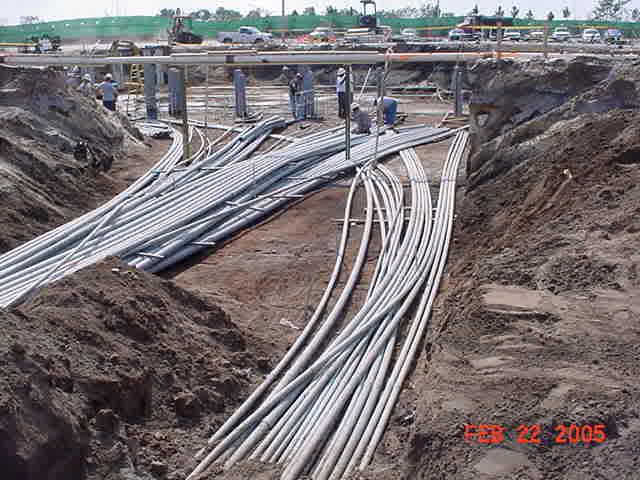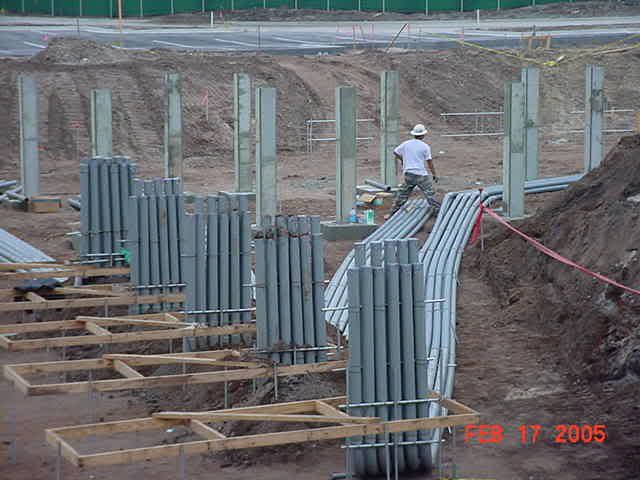LJSMITH1
Senior Member
- Location
- Stratford, CT
Well you really need to work in the field to know what your suggesting you cant use it on duct banks and thats not electrical conduit thats sewer pipe which we see everyday installed by the plumbing & mechcanical contractors which they never use because its a joke .
Yes weve seen that tool no one ever uses it . plus on 24 " it would need to be used with a crane to move it around .
They use a track hoe and two men to push that kinda pipe together its easyer ill get a picture of a install at work today for you have you ever seen 18 " or 24 " sewer pipe installed its heavy held up by a track hoe with a strap then two men line it up and the track hoe pushes the pipe together easy .
Plus they apply a grease to the seal before they connect it then it slides in
We dont beat a conduit like i said we tap it in with the side of a sledge hammer like puttin a golf ball its kinda easy . We tap it together like one or two feather taps.
Ohm, I know exactly what kind of pipe is pictured with the tool, and I also know how sewer pipe goes together (which is where I first saw this tool being used) :roll: This has nothing to do with the basic principle of the tool. The guys I saw using it, swore by it, especially for the 6" and 8" pipe. They were laying 100'+ a day, with little issue. The traditional method would be to sink a prybar into the ground and lever the end of the pipe. This took at least two or three guys, and occasionally was stubborn.
I also know that duct banks are cramped, but perhaps a slightly different sequence of assembly might provide enough room for such a tool. I don't see any reason why this tool couldn't be adapted to 4" - 6" diameter conduit runs (as long as you have space to use it).
This kind of tool could easily be adapted for PVC electrical conduit with modification, or the company may already offer one.
I just thought it would be a good suggestion if it could be utilized.


